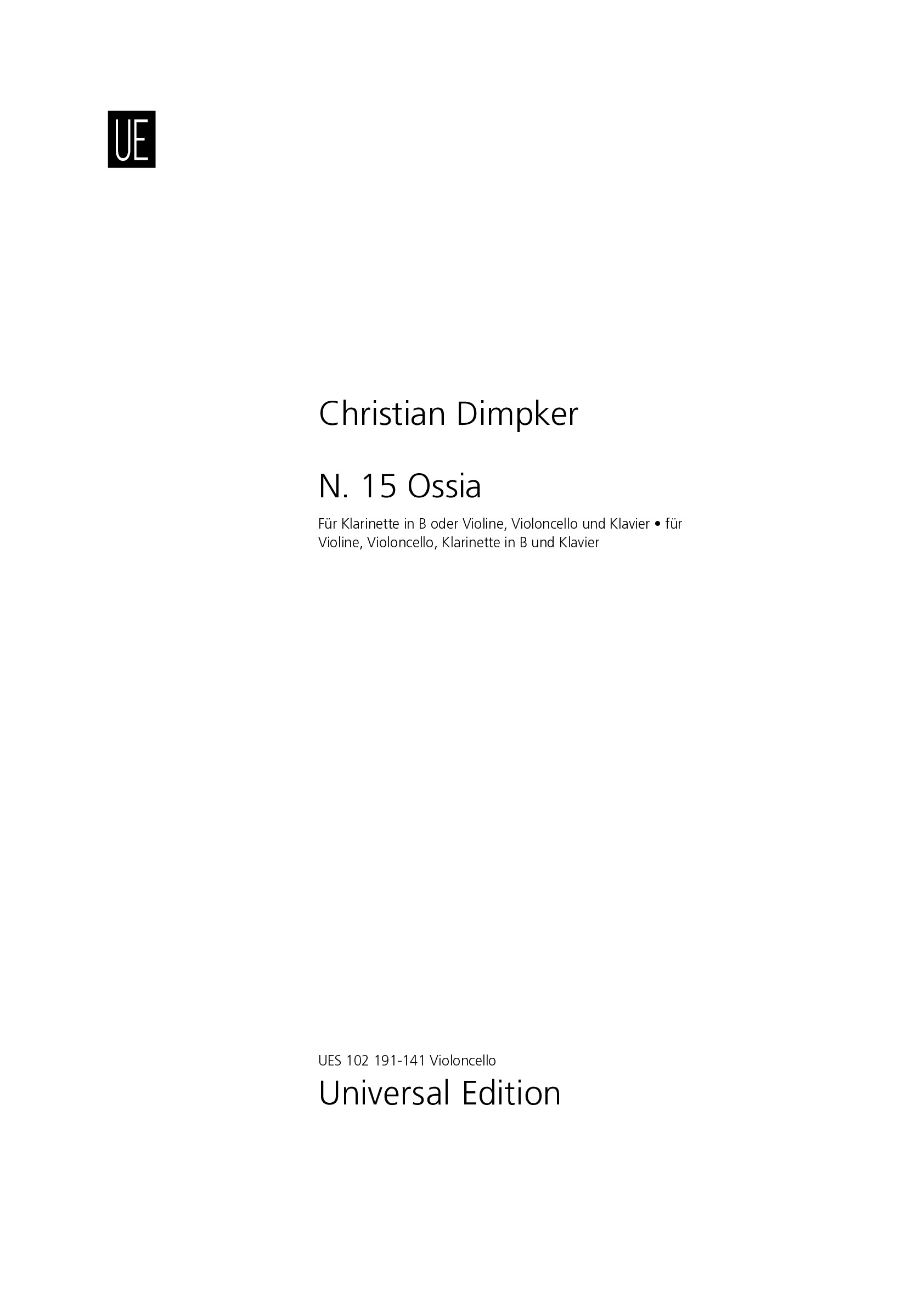

Christian Dimpker
N. 15 Ossia
Duration: 10'
Instrumentation details:
clarinet in Bb
piano
violin
violoncello
N. 15 Ossia
Translation, reprints and more



Christian Dimpker
N. 15 OssiaOrchestration: Für Klarinette in B oder Violine, Violoncello und Klavier
Type: Dirigierpartitur


Sample pages
Video
Work introduction
The title already reflects a very special element of this work as there is always one ossia-instrument; either the violin (when the clarinet plays) or the clarinet (when the violin plays). It is possible to formalise this incident. The title then reads as follows: when A (the clarinet) plays, B (the violin) does not play. Hence the piece may be performed in two ways. The two instruments, however, do not make use of ordinary tones, but instrument- (or, respectively, instrument-group-)specific extended techniques. The respective other instrument translates these sounds. As the sounds are very specific, a seamless translation may, however, not always be achieved. Therefore, the clarinetist, for instance, utilises a table in order to imitate the hits on the body of the violin. The piece is divided into two parts, while an intermezzo (slightly rapid tempo) is placed between part A (moderate tempo) and part B (slow tempo). In terms of the structure, homophonic and polyphonic sound layers alternate between the instruments. The two form sections are also divided concerning their sound-wise qualities. The division starts with the intermezzo, while certain techniques (such as cluster and harmonics) are introduced here and encroach upon part B.
What is necessary to perform this work?
The piano trio may be performed by trios with clarinet and trios with violin. When the clarinet is part of the piece, the violin’s system needs to be ignored (A → ¬B or: when A, then non-B) and when the violin is part of the piece, the clarinet‘s system needs to be ignored (& B → ¬A or: and when B, then non-A). A little wooden table needs to be placed aside the clarinettist. It should be quite uneven to produce a complex sound spectrum when hit (cf. the score). The grand piano can also ad libitum be picked up by contact microphones, modified by a ring modulator (sine, constant glissando between 87 and 194 Hz), delay (constant glissando between feedback of 35 and 70%, fixed delay times of 25 and 40 ms) and a convolution reverb (3.6 sec, pre-delay of 15 ms, free envelope, constantly switched on and off) and output via stereo speakers. The modulations shift freely against each other and thus always appear in new manners.
The parts of the clarinet & violin are combined in a single score.
